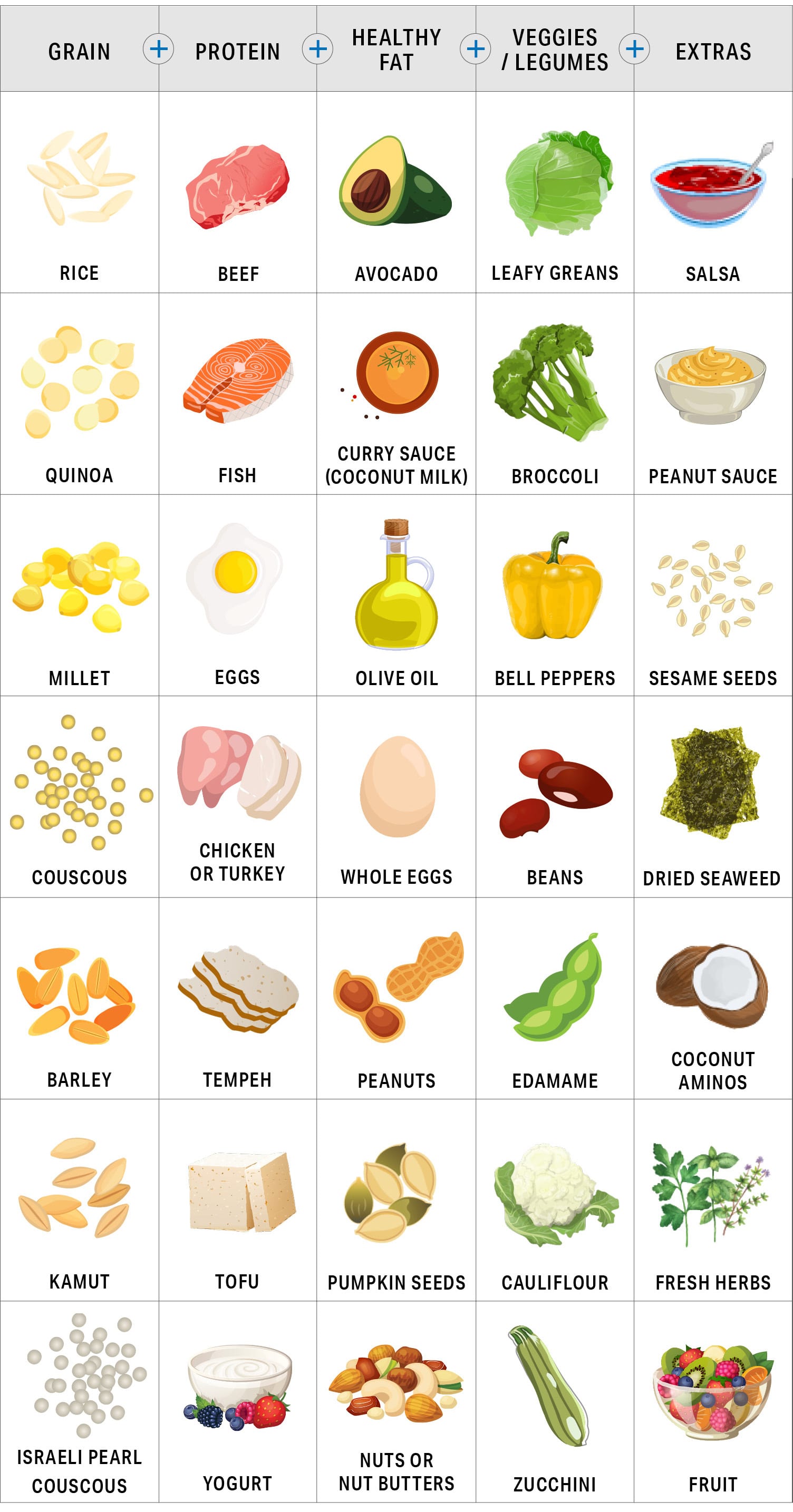
The “If It Fits Your Macros” style of eating (or IIFYM) means you plan your day around eating a certain percentage of your calories from the three macronutrient categories: carbohydrates, protein and fat. This way of eating can often allow for more flexibility, as it includes the occasional splurge, as long as it fits your macros.
Everyone has different macronutrient needs, depending on a wide range of factors, from height and weight to gender and activity level, explains Lauren Irick, RD, a fitness nutrition specialist. While a nutritionist can help you determine your individual needs, Irick says a good rule of thumb is aiming to get 35–45% of your total daily calories from carbohydrates, 25–40% from protein and 20–30% from fat. (On average, that’s roughly 45% of calories from carbs, 35% from protein and 20% from fat, says Irick.) You might eat more carbs, for instance, if you are training for an endurance event in order to replenish glycogen stores. Or, you may go higher in protein if you’re aiming for satiety while trying to lose fat, says Irick.
That’s where grain bowls come in. They are an incredibly versatile way to make a nutrient-dense meal that fits your macros. (You can use an app like MyFitnessPal to track your macros and enter your favorite food combinations.)
Here, Irick recommends a basic formula and several examples of grain bowls that fit the 45% carbs, 35% protein and 20% fat ratio. They each clock in around 500 calories, but since everyone’s calorie needs are different, feel free to adjust the portion size to your goals.
Choose one healthy grain as a base, add one protein, healthy fat, as many veggies as you like and one or two extras.


Something to keep in mind, often the protein “counts” as both a protein and fat. That may be the case when you’re eating fatty fish (salmon, tuna, sardines) or beef, for example. If you want to get your fat from somewhere else (say you want avocado for taste and fiber), then go for something leaner like chicken breast. Also, any vegetable is fair game to throw into a bowl — in fact, the more color you add, the greater range of disease-fighting antioxidants that make their way into your meal. Have fun with it and experiment with different flavors and combinations, says Irick.
SOUTHWESTERN CHICKEN BOWL
Grain: 3/4 cup quinoa
Protein: 3/4 cup roasted chicken, chopped
Veggies/Legumes: Leafy greens, 1/2 cup black beans
Fat: 1/4 avocado
Extra: 1/4 cup salsa
Calories: 524; Carbs: 55g; Protein: 45g; Fat: 10g
SALMON RICE WITH MANGO
Grain: 3/4 cup brown rice
Protein and fat: 4 ounces salmon
Veggies: 1 cup spinach, cooked
Extras: 1/4 cup mango, 2 tablespoons green onions, spinach
Calories: 457; Carbs: 50g; Protein: 39g; Fat: 9g
TOFU COUSCOUS WITH PEANUT SAUCE
Grain: 1 cup couscous
Protein and fat: 1 cup of firm tofu
Veggies: 1/2 cup cooked carrots, sliced plus 1/4 cup green peas
Extras: 1 tablespoon peanut sauce
Calories: 477; Carbs: 58g; Protein: 30g; Fat: 12g
BEEF AND BROCCOLI
Grain: 1 cup white rice*
Protein and fat: 4 ounces beef sirloin
Veggies: 1 cup cooked broccoli
Extras: 1 tablespoon soy sauce
Calories: 499; Carbs: 54g; Protein: 42g; Fat: 10g
*White rice can be a smart choice in certain circumstances, says Irick. For example: post-workout when your body can use a quick uptake of carbs to replenish glycogen.













